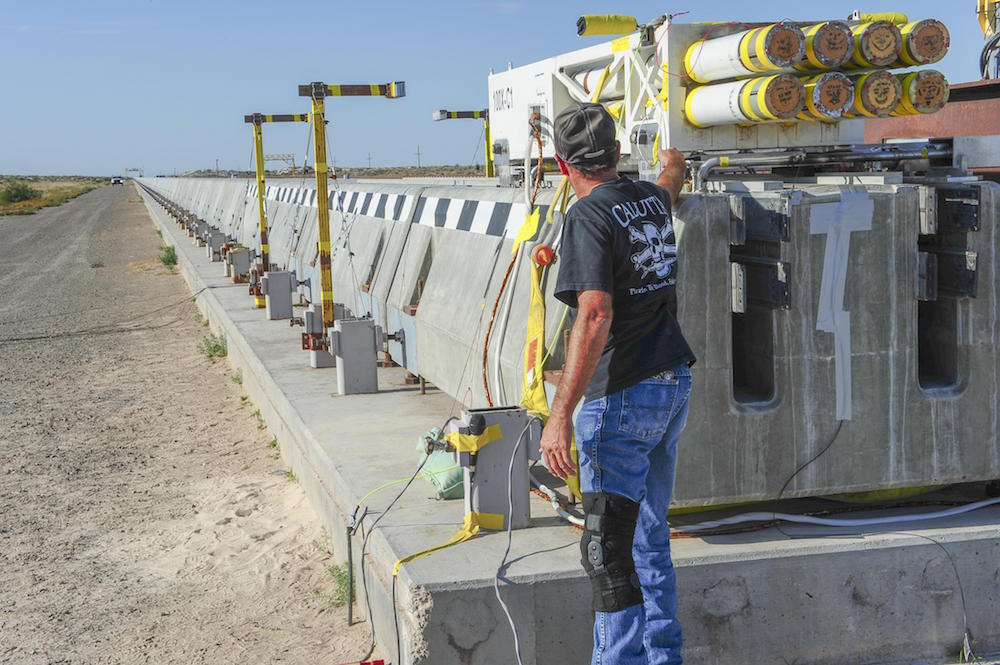
A new magnetic levitating (maglev) sled has blasted its way to a world speed record.
The lightning-fast sled is officially the fastest object of its kind, according to the U.S. Air Force. The 2,000-lb. (900 kilograms) sled, which was designed by an Air Force squadron to test the delicate instruments inside weapons systems, broke the world record for speed on March 4, eclipsing its own previous record that had been set just two days earlier.
"Today was the fastest test we've ever done with the maglev," Lt. Col. Shawn Morgenstern, commander of the 846th Test Squadron at Holloman Air Force Base in New Mexico, said in a statement when they broke the record. "We went 633 miles per hour [1,019 km/h]. Wednesday, we went 513 miles per hour [826 km/h], and prior to that, we went 510 [821 km/h] — which was a couple years ago." (As a reference, the speed of sound, or Mach 1, is 761.2 mph [1,225 km/h]). [Supersonic! The 11 Fastest Military Planes]
Though the whole test was over in a flash, it was the culmination of months of preparation. Magnetism pushes and steers the sled so that it hovers over a nearly frictionless track, while rockets accelerate the sled at 928 feet per second squared (nearly 283 meters per square second). The team spent months identifying the right materials and testing vibrations.
The magnets can levitate the sled thanks to superconductivity — the phenomenon whereby electrons flying through a material experience no resistance but superconductivity sets in only when metals get really, really cold. So, the team must cool the magnets with liquid helium to minus 452 degrees Fahrenheit (minus 269 degrees Celsius), or just a few degrees above absolute zero.
The system is designed to test the delicate instrumentation on weapons systems. By tweaking the vibration levels experienced at high speeds, the team can determine what levels of jostling these instruments can realistically tolerate.
The new test is the result of six months of hard work, but the team isn't done; they're still trying to get even faster.
Get the world’s most fascinating discoveries delivered straight to your inbox.
"What we have planned to do after this test is, refine the design of the sled itself," Morgenstern said. "We want to look at some lighter materials and continue to see what kind of capability we can get out of this system in terms of the speeds that we're capable of going."
Follow Tia Ghose on Twitterand Google+. Follow Live Science @livescience, Facebook & Google+. Original article on Live Science.

Tia is the managing editor and was previously a senior writer for Live Science. Her work has appeared in Scientific American, Wired.com and other outlets. She holds a master's degree in bioengineering from the University of Washington, a graduate certificate in science writing from UC Santa Cruz and a bachelor's degree in mechanical engineering from the University of Texas at Austin. Tia was part of a team at the Milwaukee Journal Sentinel that published the Empty Cradles series on preterm births, which won multiple awards, including the 2012 Casey Medal for Meritorious Journalism.
